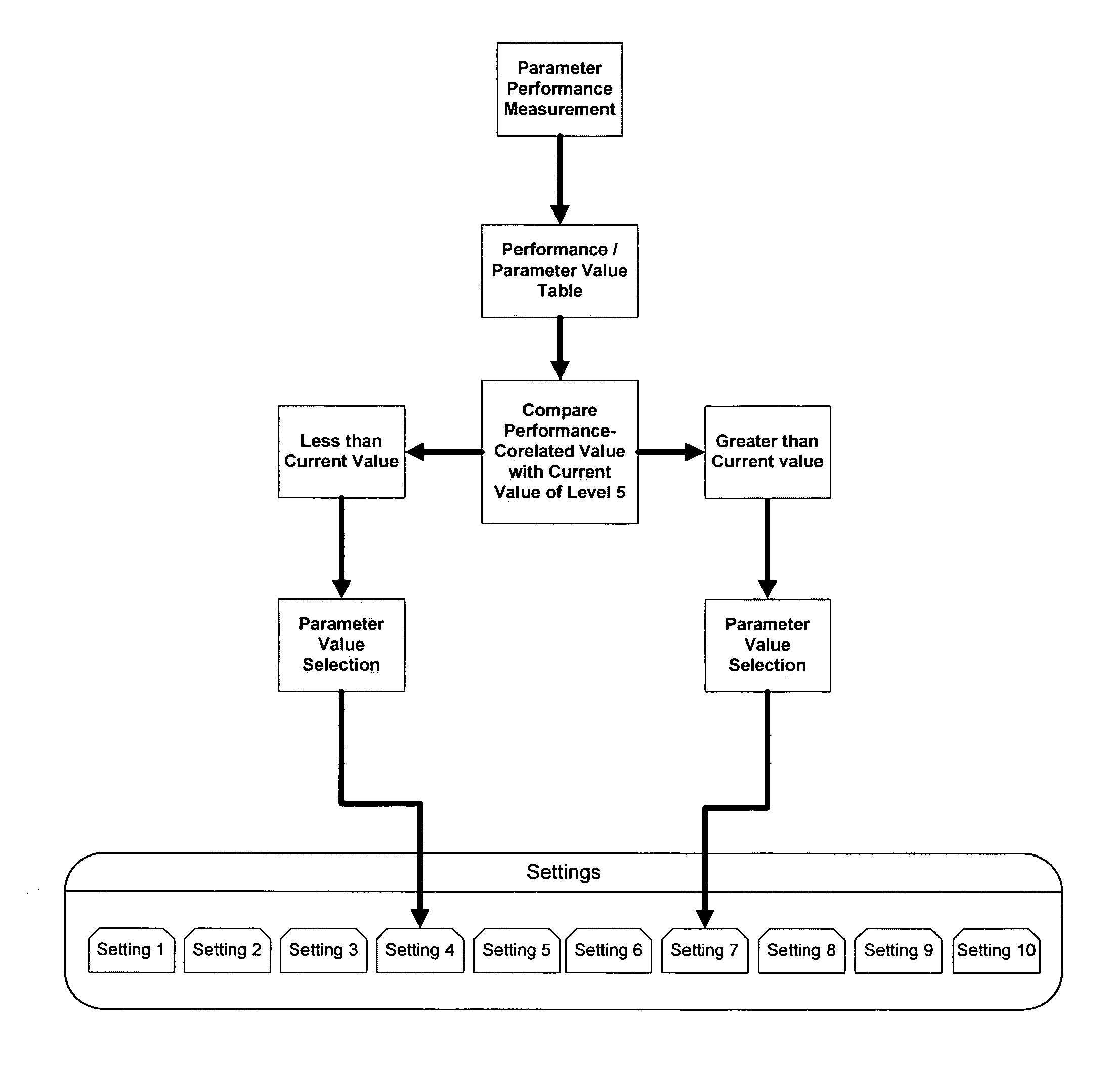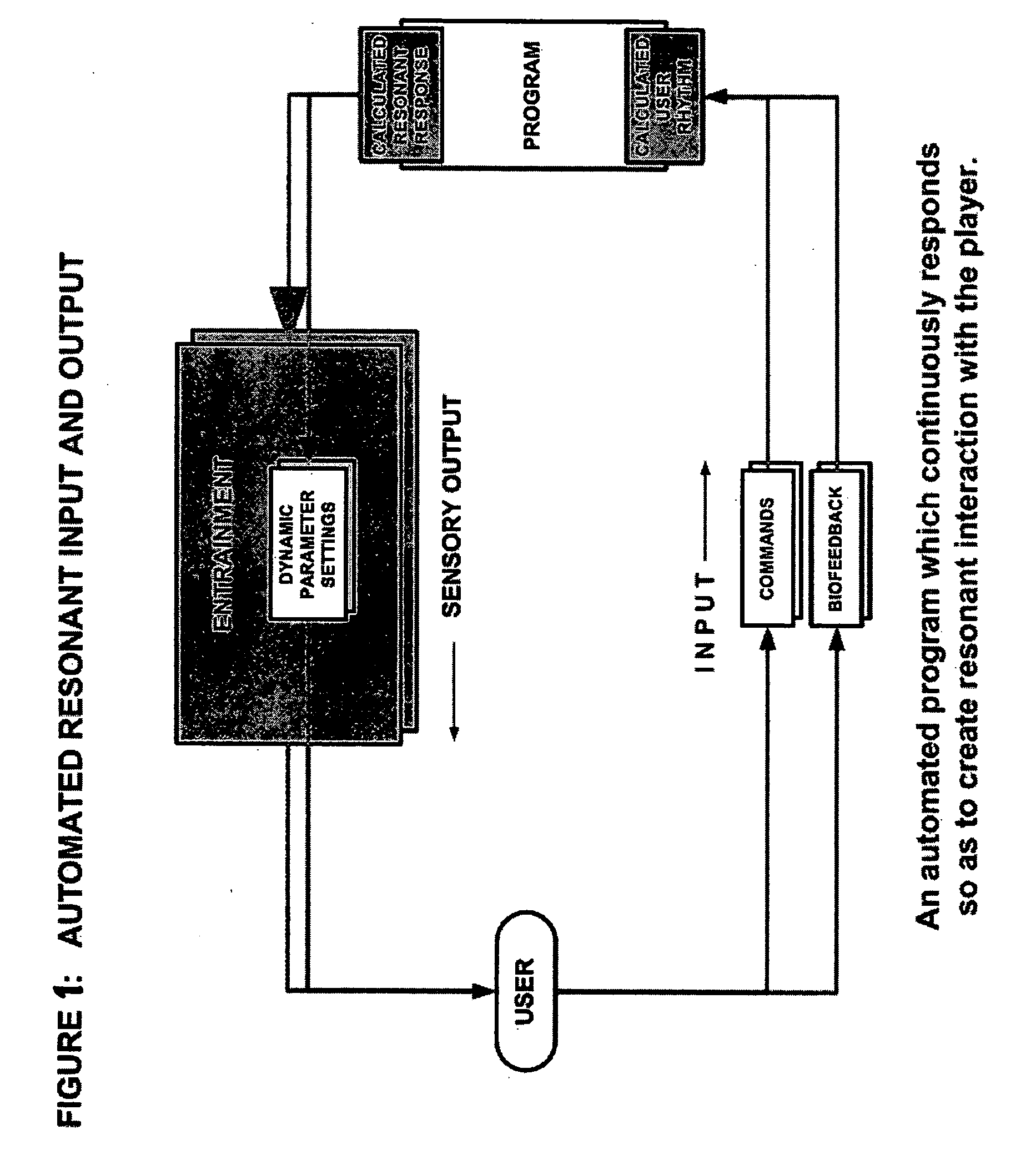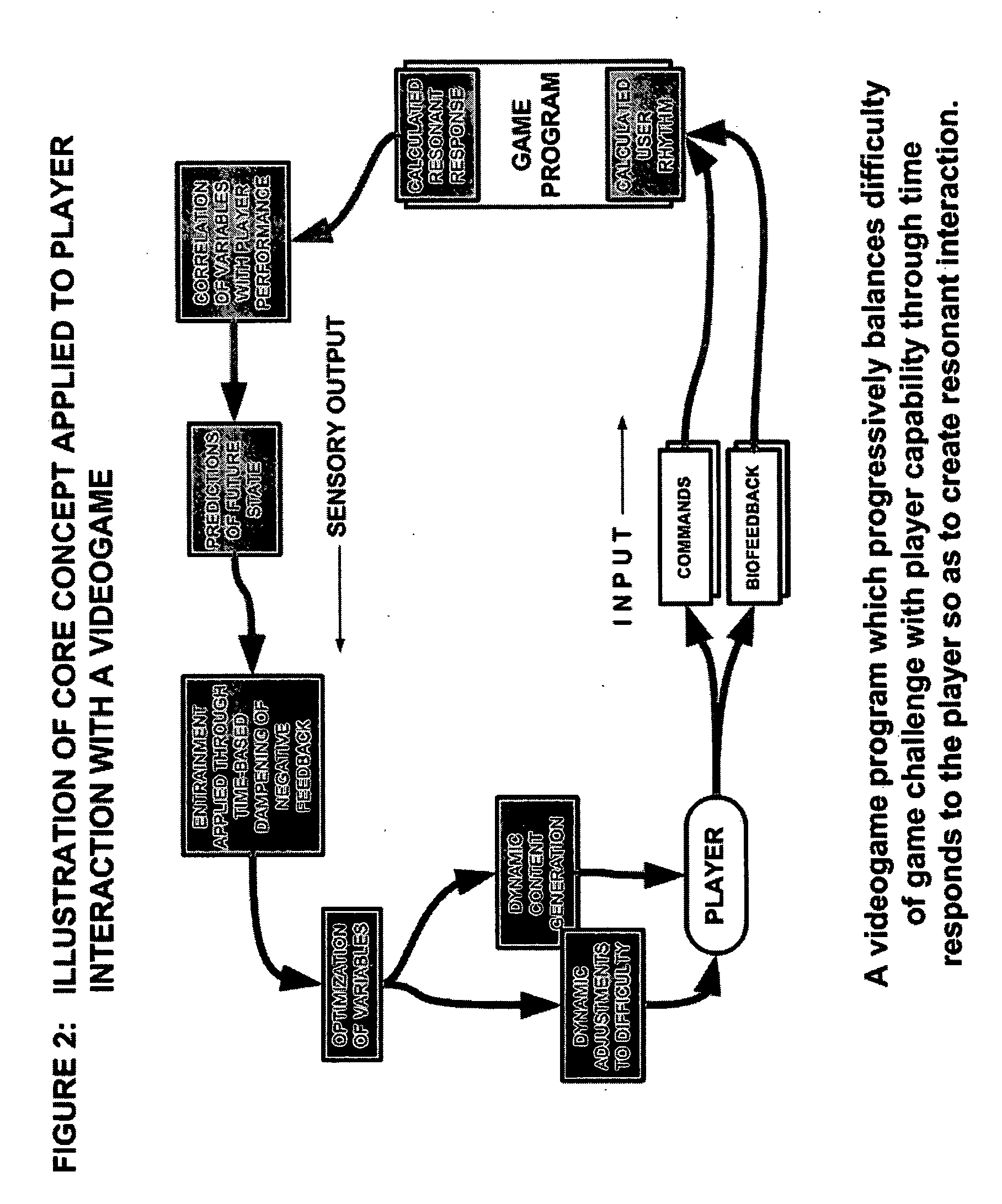Method for dynamically adjusting an interactive application such as a videogame based on continuing assessments of user capability
a technology of interactive applications and user capabilities, applied in the field of system and method for dynamically adjusting an interactive application, can solve the problems of not progressively balancing the game parameters to the player's capability, learning or predictive systems do not dynamically balance the program response, and increase difficulty, so as to reduce the difference between user performance and the effect of game performan
- Summary
- Abstract
- Description
- Claims
- Application Information
AI Technical Summary
Benefits of technology
Problems solved by technology
Method used
Image
Examples
Embodiment Construction
[0054] In the following detailed description, certain preferred embodiments are described as illustrations of the invention in a specific application, network, or computer environment in order to provide a thorough understanding of the present invention. However, it will be recognized by one skilled in the art that the present invention may be practiced in other analogous applications or environments and with other analogous or equivalent details. Those methods, procedures, components, or functions which are commonly known to persons in the field of the invention are not described in detail as not to unnecessarily obscure a concise description of the present invention.
[0055] Some portions of the detailed description that follows are presented in terms of procedures, steps, logic blocks, processing, and other symbolic representations of operations on data bits within a computer memory. These descriptions and representations are the means used by those skilled in the data processing ...
PUM
 Login to View More
Login to View More Abstract
Description
Claims
Application Information
 Login to View More
Login to View More - R&D
- Intellectual Property
- Life Sciences
- Materials
- Tech Scout
- Unparalleled Data Quality
- Higher Quality Content
- 60% Fewer Hallucinations
Browse by: Latest US Patents, China's latest patents, Technical Efficacy Thesaurus, Application Domain, Technology Topic, Popular Technical Reports.
© 2025 PatSnap. All rights reserved.Legal|Privacy policy|Modern Slavery Act Transparency Statement|Sitemap|About US| Contact US: help@patsnap.com



